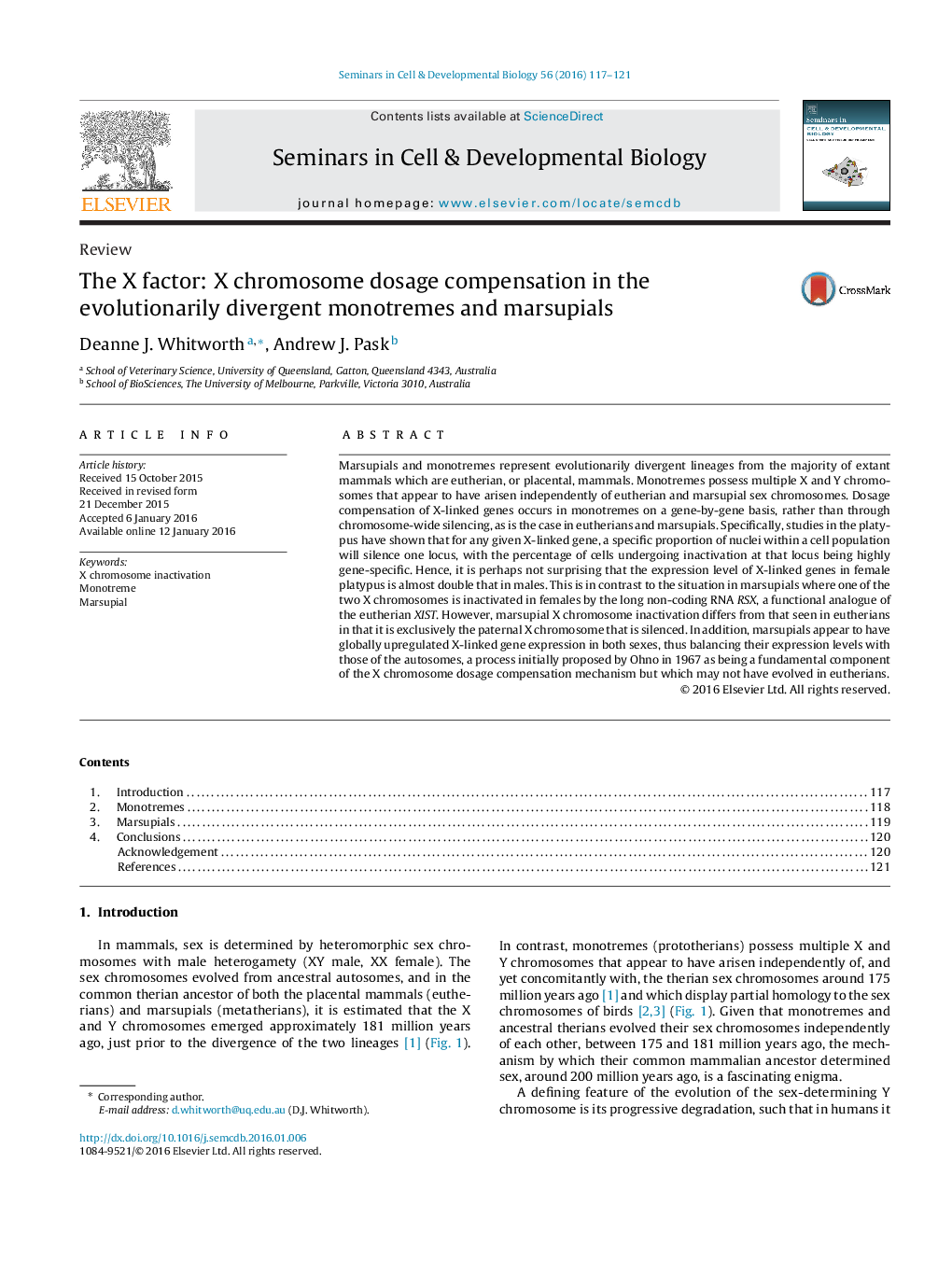| Article ID | Journal | Published Year | Pages | File Type |
|---|---|---|---|---|
| 2202484 | Seminars in Cell & Developmental Biology | 2016 | 5 Pages |
Marsupials and monotremes represent evolutionarily divergent lineages from the majority of extant mammals which are eutherian, or placental, mammals. Monotremes possess multiple X and Y chromosomes that appear to have arisen independently of eutherian and marsupial sex chromosomes. Dosage compensation of X-linked genes occurs in monotremes on a gene-by-gene basis, rather than through chromosome-wide silencing, as is the case in eutherians and marsupials. Specifically, studies in the platypus have shown that for any given X-linked gene, a specific proportion of nuclei within a cell population will silence one locus, with the percentage of cells undergoing inactivation at that locus being highly gene-specific. Hence, it is perhaps not surprising that the expression level of X-linked genes in female platypus is almost double that in males. This is in contrast to the situation in marsupials where one of the two X chromosomes is inactivated in females by the long non-coding RNA RSX, a functional analogue of the eutherian XIST. However, marsupial X chromosome inactivation differs from that seen in eutherians in that it is exclusively the paternal X chromosome that is silenced. In addition, marsupials appear to have globally upregulated X-linked gene expression in both sexes, thus balancing their expression levels with those of the autosomes, a process initially proposed by Ohno in 1967 as being a fundamental component of the X chromosome dosage compensation mechanism but which may not have evolved in eutherians.
